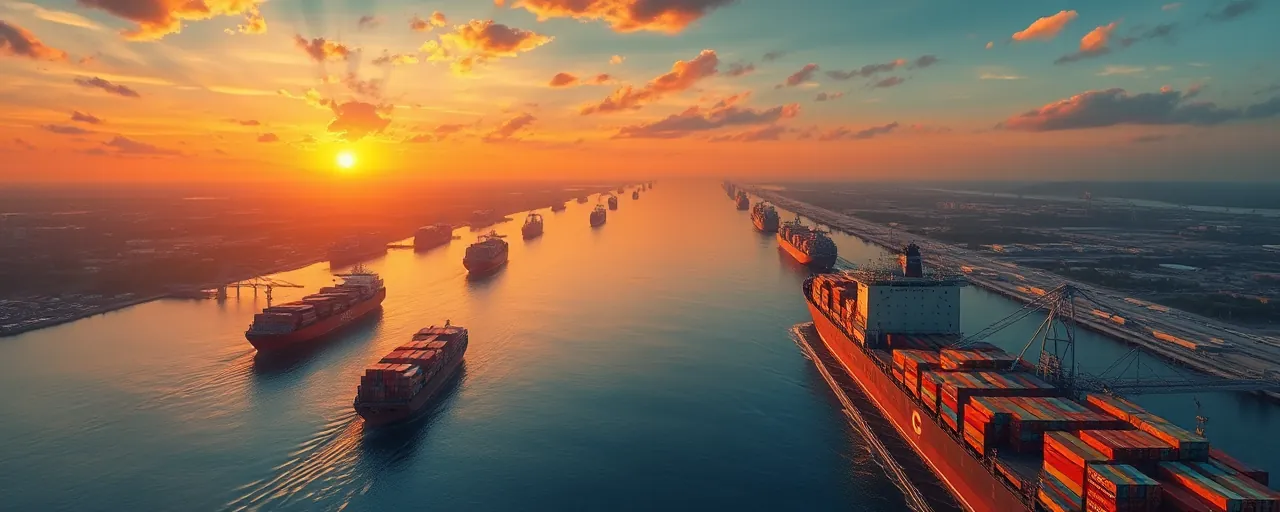A Historic Visit Sparks Action
On April 8, 2025, Panama’s President José Raúl Mulino welcomed U.S. Secretary of Defense Pete Hegseth to Panama City, a meeting that felt like it came out of nowhere yet carried the weight of decades. Alongside Panama Canal Authority Administrator Ricaurte Vazquez, the leaders seized the moment to reaffirm a partnership stretching back over a century, rooted in shared goals and a waterway that keeps the world moving. With global trade and regional stability hanging in the balance, their talks zeroed in on real-world challenges, from Canal security to immigration, that hit close to home for both nations.
The Panama Canal isn’t just a marvel of engineering; it’s a lifeline, channeling over 40% of U.S. container traffic, worth about $270 billion a year. For Panama, it’s a national artery, pumping revenue and pride through its economy. This visit wasn’t about grandstanding; it was a gritty, sleeves-rolled-up commitment to tackle threats head-on, whether they’re digital hackers or geopolitical rivals eyeing the region. The leaders didn’t mince words, agreeing that standing together beats going it alone when the stakes are this high.
Bolstering the Canal’s Defenses
Security topped the agenda, and the numbers tell part of the story. Over the past five years, the U.S. has poured more than $230 million into Panama’s defense and security, funding everything from joint training to cutting-edge tech. New agreements signed during Hegseth’s visit promise faster transit for U.S. and Panamanian warships through the Canal, a practical move to keep trade flowing and threats at bay. A Cyber Cooperation Arrangement between U.S. Southern Command and the Panama Canal Authority also took center stage, aiming to shield the Canal from cyberattacks that could grind global shipping to a halt.
History hangs heavy here. The U.S. once guarded the Canal with tens of thousands of troops during World War II, fending off fears of sabotage. Today’s threats look different, cyber risks and narco-traffickers instead of enemy fleets, but the urgency hasn’t faded. Joint exercises like the revived PANAMAX, set for 2026, will test how well both nations can protect this chokepoint. Some voices, including trade experts, argue the focus on military muscle overlooks commercial shipping needs, yet supporters say a secure Canal benefits everyone who relies on it.
Shifting Alliances and Border Lines
Panama’s decision to ditch China’s Belt and Road Initiative grabbed headlines, making it the first in the hemisphere to walk away from Beijing’s sprawling investment web. Mulino framed it as a stand for sovereignty, a move Hegseth cheered as a blow to China’s foothold near the Canal. It’s a sharp turn from 2017, when Panama eagerly signed on for Chinese cash to boost infrastructure. Now, with U.S. backing, Panama’s eyeing American investment instead, though some local business leaders worry about trading one big player for another.
On the ground, Mulino’s border crackdown in the Darién Gap, a jungle gauntlet that saw over 500,000 migrants cross in 2023, stirred the pot. Backed by U.S.-funded biometric tools and repatriation deals, Panama’s slashed those numbers, closing off routes to curb illegal crossings. Human rights advocates have pushed back, arguing it strands vulnerable people with nowhere to turn. The U.S. sees it as a win for order, but the tension between security and compassion isn’t going away anytime soon.
What’s Next for the Partnership
This visit wasn’t just talk; it locked in plans that could shape the region for years. A Memorandum of Understanding will ramp up joint military drills, while a High-Level Security Dialogue aims to keep both nations on the same page. The U.S. Army Corps of Engineers will lend expertise to keep the Canal running smoothly, a nod to its long-term stakes in Panama’s success. For everyday Panamanians, it’s less about treaties and more about jobs and safety, hopes that these deals deliver beyond the briefing rooms.
The road ahead isn’t all smooth sailing. Cyber threats keep evolving, and the Darién’s migrant crisis won’t vanish with a few checkpoints. Panama’s balancing act, leaning on U.S. support while guarding its own turf, will test Mulino’s resolve. For the U.S., it’s a chance to cement influence in a region where China’s shadow still looms. Both sides left the table with a clear message: the Canal’s too vital to let slip, and they’re in it together, for better or worse.
